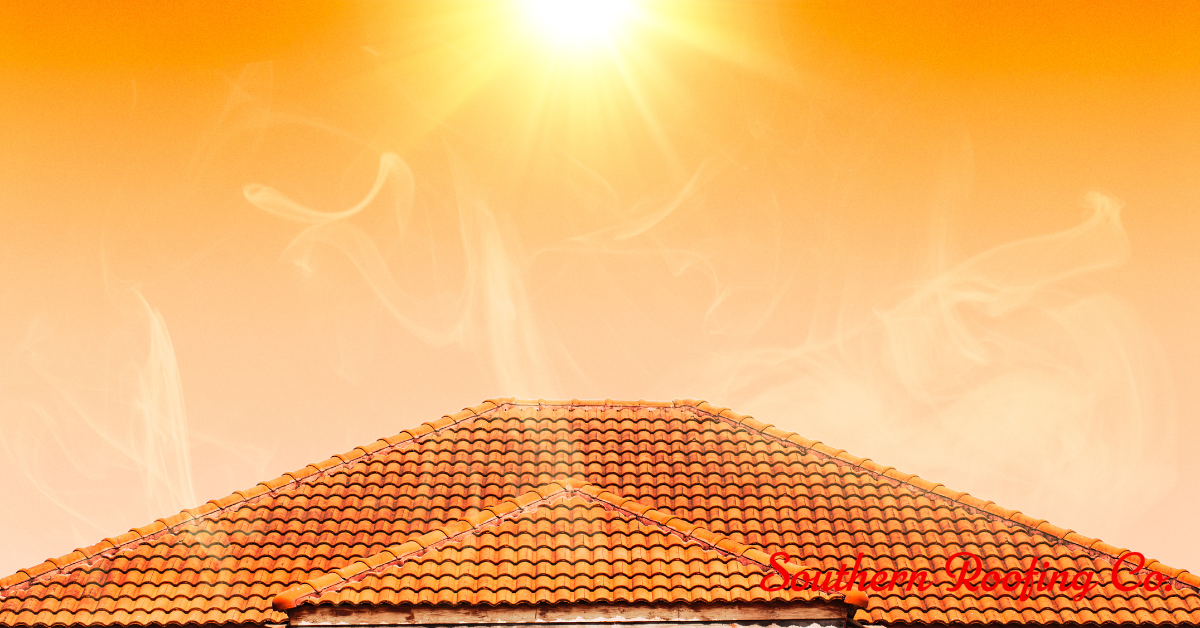
Middle Tennessee summers are no joke. With long days of intense sun, soaring temperatures, and the occasional powerful storm, your roof takes a beating during the hottest months of the year. While most homeowners worry about wind or rain damage, heat damage is an often-overlooked threat that can shorten the lifespan of your roof and lead to costly repairs.
In this blog, we’ll break down the common signs of heat-related roofing issues and what to do if you spot them. Whether you need roof repair or are considering a full roof replacement, staying informed can save you money and protect your home.
How Heat Affects Your Roof
Extreme heat and UV rays cause materials to expand, contract, dry out, and deteriorate over time. Here in Middle Tennessee, where high temperatures and humidity are common, the impact is especially pronounced. Proper attic ventilation can help reduce damage, but over the years, wear and tear are inevitable—especially without regular maintenance from a trusted Middle Tennessee roofing company.
Top Signs of Heat Damage on Your Roof
1. Curling or Buckling Shingles
What to Look For:
Shingles that appear wavy, lifted at the edges, or distorted.
Why It Happens:
When shingles are exposed to high heat and UV rays, they can dry out, lose flexibility, and start curling. This is particularly common in residential roofing with asphalt shingles.
What to Do:
If you spot curling shingles, contact a roofing contractor. These areas are vulnerable to leaks and may need roof repair or shingle replacement.
2. Blistering Shingles
What to Look For:
Small raised bubbles or blisters on the surface of your shingles.
Why It Happens:
Blistering occurs when moisture trapped inside the shingle heats up and expands, creating a bubble. Over time, these blisters can burst, exposing the underlayment and reducing the shingle’s ability to protect your home.
What to Do:
Have a professional inspection done to determine the extent of the damage. In some cases, localized roof repairs can help. In more severe cases, roof replacement might be necessary.
3. Granule Loss
What to Look For:
Bald spots on shingles or granules accumulating in gutters and downspouts.
Why It Happens:
Granules are the outer protective coating on asphalt shingles. Excessive heat can cause them to break down and fall off, leaving your shingles exposed to the elements.
What to Do:
Granule loss is a clear sign your roof is aging or deteriorating due to heat exposure. If you notice this, it’s time to call a Middle Tennessee roofing company for an evaluation.
4. Cracked or Split Shingles
What to Look For:
Visible cracks, fractures, or breaks in the surface of shingles.
Why It Happens:
Heat causes materials to expand during the day and contract at night. Over time, this constant movement can weaken the shingles, causing them to crack or split.
What to Do:
Cracked shingles can lead to leaks and should be replaced promptly by a qualified roofing contractor.
5. Sagging Roof Decking
What to Look For:
A roof that appears uneven, wavy, or has noticeable dips when viewed from the ground.
Why It Happens:
Excess heat combined with poor attic ventilation can cause roof decking to warp, especially in wooden structures. Moisture trapped from condensation can worsen the issue.
What to Do:
This issue may indicate structural damage beneath the shingles. Immediate professional assessment is needed to prevent further damage and determine if roof replacement is necessary.
6. Peeling Flashing or Sealant
What to Look For:
Loose or curling flashing around chimneys, vents, and skylights.
Why It Happens:
Sealants can dry out and crack under constant sun exposure, which can lead to leaks in vulnerable areas of your roof.
What to Do:
These areas can often be repaired quickly by a roofing company, but delay can lead to more significant water damage.
The Importance of Professional Roof Inspections
Summer is a smart time to schedule a professional inspection with a Middle Tennessee roofing company. A thorough inspection will catch small problems before they become costly issues. This includes checking:
- Attic ventilation and insulation
- Flashing and sealant conditions
- The condition of underlayment and decking
- Signs of interior leaks or moisture buildup
When to Consider Roof Repair vs. Roof Replacement
Sometimes a few damaged shingles can be easily repaired. Other times, heat damage is widespread and your roof is nearing the end of its life. Here’s a quick guideline:
Choose Roof Repair If:
- The damage is minor or localized
- Your roof is less than 10–12 years old
- There are no signs of internal water damage
Consider Roof Replacement If:
- Your roof is over 15–20 years old
- There is significant granule loss or sagging
- Multiple repairs have already been done
If you’re unsure, a roofing contractor can help you weigh the pros and cons of repair vs. replacement for your specific situation.
Preventing Heat Damage in the Future
Install Reflective Shingles
Light-colored or reflective roofing materials can reduce surface temperature and slow degradation.
Ensure Proper Ventilation
A balanced system of intake and exhaust vents reduces heat buildup in your attic.
Schedule Seasonal Maintenance
A summer inspection can help you catch small issues early and extend the life of your roof.
Your Roof
Summer heat can take a serious toll on your roof—especially in Middle Tennessee’s hot and humid climate. From curling shingles to sagging decking, these signs of heat damage should never be ignored. Whether you need a simple roof repair or are due for a full roof replacement, working with an experienced roofing company ensures your home stays protected year-round. Request a quote today!

